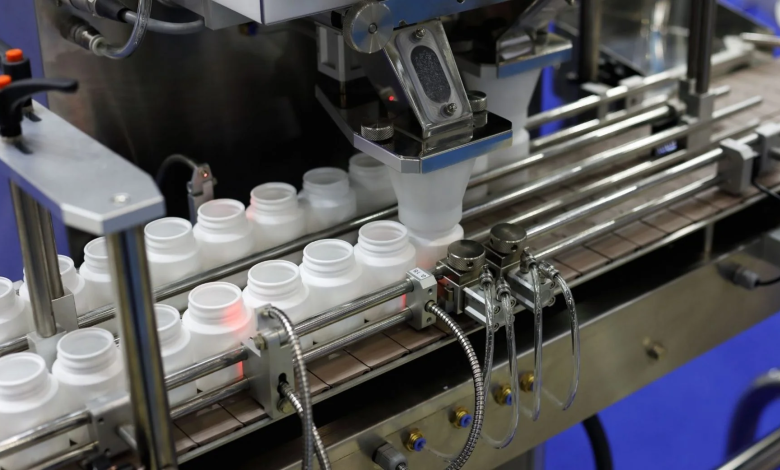Pharmaceutical Packaging Equipment Market Expected to Reach $15.2 Billion by 2032

Allied Market Research has released a comprehensive report forecasting the global pharmaceutical packaging equipment market to reach $15.2 billion by 2032, with a compound annual growth rate (CAGR) of 7.1% from 2023.
The report attributes this growth to the increasing prevalence of chronic disorders, technological advancements, and a rising demand for pharmaceutical packaging equipment in the pharmaceutical industry.
Market Drivers and Growth Determinants
The primary drivers for the growth of the pharmaceutical packaging equipment market include the expanding pharmaceutical sector, technological innovations in packaging equipment, and strategic development initiatives by key industry players. However, challenges such as the high cost and maintenance of pharmaceutical packaging equipment pose potential restraints. Despite this, opportunities in emerging markets are expected to open new avenues for growth.
Market Overview
In 2022, the global pharmaceutical packaging equipment industry generated $7.6 billion in revenue. The forecast predicts a substantial increase, reaching $15.2 billion by 2032. The report covers various segments, including machine type, formulation type, automation type, end-user, and region, providing a comprehensive analysis of the market landscape.
• Segmentation Overview:
• Machine Type: Filling Machines, Form, Fill And Seal Machines, Cartoning Machines, Palletizing Machines, Labelling Machines, and Others.
• Formulation Type: Liquid Packaging Equipment, Solid Packaging Equipment, Semi-Solid Packaging Equipment, and Others.
• Automation Type: Manual Packaging Equipment, Semi-Automatic Packaging Equipment, and Automatic Packaging Equipment.
• End User: Pharmaceutical Companies and Contract Manufacturing Companies.
• Market Dynamics:
• Drivers: Technological advancements in packaging, growing contract manufacturing, and the overall expansion of the pharmaceutical sector.
• Opportunities: Emerging market growth.
• Restraints: High cost and maintenance of pharmaceutical packaging equipment.
• Economic Downturn Analysis:
• During economic downturns, there is a heightened focus on cost containment and efficient resource allocation, impacting research funding.
• Despite economic challenges, the demand for pharmaceutical packaging equipment remains sustained, driven by ongoing health concerns and the need for medication packaging.
Segment Insights:
• Filling Machine Segment: Maintains the largest market share in 2022, driven by increased demand in the pharmaceutical industry.
• Others Segment: Expected to achieve the highest CAGR of 9.0% from 2023 to 2032, attributed to concerns about counterfeit drugs in the pharmaceutical supply chain.
• Liquid Packaging Equipment Segment: Holds the largest market share in 2022, ensuring quality and integrity for sensitive liquid pharmaceuticals.
• Semi-Solid Packaging Equipment Segment: Projected to achieve the highest CAGR of 7.7% from 2023 to 2032, meeting the demand for diverse semi-solid formulations.
• Automatic Packaging Equipment Segment: Expected to attain the highest CAGR of 7.7% from 2023 to 2032, offering advantages such as efficiency, consistent product quality, and cost-effectiveness.
• Pharmaceutical and Biotechnology Companies Segment: Maintains a lead position in 2022, contributing to nearly two-thirds of the global market revenue.
• Contract Manufacturing Companies Segment: Projected to achieve the highest CAGR of 8.0% from 2023 to 2032, driven by the adoption of modern technologies.
• Regional Insights:
• Asia-Pacific: Holds the largest market share in 2022, accounting for nearly one-third of the global pharmaceutical packaging equipment market revenue. Expected to maintain dominance due to increased healthcare expenditure and government initiatives to enhance healthcare facilities.
Key Market Players: Leading companies include Syntegon Holding GmbH, OPTIMA Industries GmbH & Co. KG., Industria Macchine Automatiche S.p.A., Korber AG, Bausch + Ströbel, Coesia S.P.A., Marchesini Group S.p.A., Romaco Group, Multivac Group, and ACG Group.
The report provides a detailed analysis of these key players in the pharmaceutical packaging sector, showcasing their business performance, operating segments, product portfolio, and strategic moves to maintain dominant shares in different regions.





